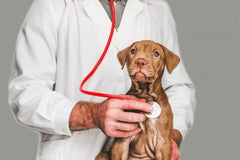
Life Of The Living: Liver & Livomate
The liver is the largest solid organ in the body and is an essential organ of the body, an integral part of the digestive system, as is known to everybody. But did you know that the liver is considered to be the largest gland of the body and has a widespread role not only in the process of digestion but also in the process of detoxification, which also helps to metabolize various chemicals and medicines, produce proteins such as albumin and so on! The liver is essentially one of the core components of the body and can be considered to be a part of the highly important organ group, with its rank equaling that of the Kidneys, Heart, and Brain. In today’s blog, let us unravel this beautiful organ, its role, functions, and dysfunction, and some fun facts on our way to know more about liver diseases and supportive care. Before we begin our journey to the centre of the body, let us have a look at some facts about this beautiful organ!
Some Fun Facts about the Liver:
1. It is the largest gland in the body.
2. It produces bile which helps to digest fats and is stored in a pouch, a gland called the gallbladder, which opens into the small intestine.
3. It helps to produce albumin, an important blood protein.
4. It helps to filter blood via the process of entero-hepatic recycling.
5. Liver helps and aids in forming blood clotting factors.
6. Liver also helps to maintain the balance of Amino Acids in the body.
7. Liver helps to resist infections.
8. It stores certain vitamins such as Vitamin A, Vitamin D, E, and K.
9. Liver helps to store glucose, and form glucose when needed via a process called gluconeogenesis whenever the levels of blood glucose are low.
10. It helps to maintain the osmotic balance of the body.
11. It works meticulously to detoxify various medicines, toxins, xenobiotics, etc.


Trouble For Liver: Some Common Diseases Of The Liver
The Liver is the target organ for the coordination of a number of vital functions. It would not be an understatement to say that the entire orchestra of organs has one conductor- the Liver. The liver has good regeneration capacity if faced with some unwanted biological agent. Let us have a look at some of the commonly encountered Hepatic Diseases:
1. Hepatitis:
Hepatitis translates to inflammation of the liver. Inflammation is usually set up due to some form of insult by a biological agent or chemical agent. For instance, certain plants such as Senecio or Crotalaria are hepatotoxic; so are certain fungi such as aspergillus. There is a certain number of Bacteria, too, which add to the list, such as Leptospira, Salmonella, Streptococcus, Staphylococcus, Clostridium, etc. To add to the hepatitis drama, certain viral agents, too, have a strong role. For instance, ICHV, or Infectious Canine Hepatitis Virus causes hepatitis in dogs, while FIPV, or feline panleukopenia virus, can, too, mingle with the normal functioning of the liver.
Apart from these causes, other events such as nutritional deficiencies of Vit E, Choline, Methionine, or excess fat in the diet can propel hepatic damage. Certain toxic medicines, such as paracetamol, can cause immense hepatic damage, and at times dogs and cats may succumb to this. Thus, there is a good lesson to be noted here;
‘Never give random human drugs/medicines to pets unless and until your Vet prescribes and guides you to do so.’
2. Jaundice:
Jaundice isn’t a disease entity in itself but is an indicator of disease; thus, jaundice is termed as a symptom of disease rather than a disease entity itself. Nevertheless, jaundice is a good marker for a variety of diseases. Bilirubin is a compound commonly found in the blood cells, due to excessive release of this compound can cause yellowish- discoloration of the mucous membranes, skin, conjunctiva, etc., commonly called Jaundice.
Jaundice can be classified into three groups
- Pre-Hepatic Jaundice: Here, the red blood cells are lysed due to some disease process such as blood parasites, e.g., Babesia, Ehrlichia, Leptospira, Immune Mediated Haemolytic Anaemia, etc. which causes excessive bilirubin expulsion via the haemolysis of RBCs than can liver handle at any given moment, thereby causing jaundice.
- Hepatic Jaundice: Here, the insult lies in the hepatic or liver cells itself, wherein there is an impaired conjugation process due to hepatic cells being diseased. The Bilirubin is thereby expelled into the bloodstream, directly causing jaundice. This can be commonly observed in cases of hepatitis.
- Post-Hepatic Jaundice: if the bile duct is occluded due to some reason, such as parasites, bile duct stones, stenosis, or tumorous growths hampering the normal release of bile can again cause jaundice.
3. hepatic neoplasms:
Neoplasms or new growth refers to the uncontrolled proliferation of cells or cancer. This condition is common in older patients, usually >8 years. However, if genetic and adverse environmental conditions supervene, cancer or hepatic neoplasms can be seen in younger dogs as well. The most common primary hepatic neoplasm in dogs is hepatocellular carcinomas. Other types of cancers which could be encountered in liver tissues are hemangiosarcoma, lymphoma, and sarcomas. These are diagnosed on the basis of routine tests, MRI/CT, and Liver Biopsy.
4. Hepatic Encephalopathy:
Due to improper Porto-systemic shunt system in dogs, which is a spectrum of neuropsychiatric abnormalities seen in patients with liver dysfunction. The most important culprit of neurological signs is Ammonia, which is circulating in the blood and isn’t adequately processed into a non-toxic substance as the liver is malfunctioning. Thus, brain cells are damaged due to these circulating toxic substances, thereby manifesting as a disease process. The signs of symptoms of HE are:
- Circling
- Head pressing
- Seizures
- Ataxia
- Aimless walking
- Coma
- Prostration and death in severe cases.
What Are The Various Manifestations Of Hepatic Dysfunctions?
The liver, as we know it is a vital organ that is connected to almost every core activity, right from the blood clotting mechanism to detoxifying harmful toxins, liver does it all! Here are some of the common clinical manifestations of hepatic dysfunction:
1. Jaundice: Although not always attributed to the Liver a cent percent [as in the case of tick fever-associated haemolysis, etc.] it’s still an important manifestation in cases of hepatic-related diseases such as hepatitis or cholestasis due to obstruction, etc.
2. Emaciation, Weight Loss: due to chronic hepatitis or some liver-associated lesion, it’s common to see emaciation and weight loss in our furry friends.
3. Oedema: In sick Liver, Albumin isn’t produced in sufficient quantities, thus, albumin is not available in sufficient amounts in the bloodstream. Albumin is an essential protein that helps maintain the hydrostatic pressure and, if decreased, can cause ascites or oedema. This is a particularly commonly observed phenomenon in cases of Hepatic Failure.
4. NervousSigns: In cases of hepatic encephalopathy, nervous signs such as Head Pressing, Circling, Seizures, and Ataxia could be observed
5. Haemorrhage: The liver is involved in manufacturing essential blood clotting factors, without which there’s an increased chance of spontaneous haemorrhage
6. Vomiting: Vomiting is a non-specific sign which could be attributed to hepatic related disorder. However, it is important to rule out other reasonssuch as digestive malfunctions.
How Are Liver Diseases Diagnosed?
1. Blood Reports
Standard Test for detecting liver dysfunction is via running a Complete Blood Test. Blood profiling plays an immense role in pointing out what could be going wrong. Coupled with the manifested signs and symptoms Liver diseases can be easily diagnosed on the basis of CBC (Complete Blood Count) and LFT (Liver Function Test). These tests check a number of different parameters in the blood. A few examples of parameters to be tested in case of suspected Liver Disease are:
- Albumin and Total Protein:
- Enzymes such as – ALP/AST/GGT/ALT [Liver related]
- WBC Count
- RBC Count
- Platelet Count
- Blood Cholesterol
- Prothrombin Time
2. Palpation And Percussion:
On physical exam, your vet will try and palpate the abdomen to locate the edge of the liver and notice any signs of hepatic enlargement [hepatomegaly] or any sort of pain response that can be elicited on deep percussion.
3. Liver Biopsy:
For more complicated Hepatic/liver related dysfunctions, such as fatty infiltrations, Toxicity of Copper, Zinc, and Lead, or to further investigate neoplasia[cancer], etc. Liver Biopsy is the standard gold test. Through biopsy, one can find out what is going wrong at the cellular level to help differentiate and diagnose the exact cause of liver dysfunction.
4. Usg:
Ultrasonography helps us to have a closer look at the internal structures which are anatomically and physiologically closely related to the liver. Through USG it becomes possible to locate any abnormalities in the abdominal area, and have a closer look at the digestive organs such as the pancreas, liver, intestines, kidneys, etc.
5. Radiography:
X-RAY is an important tool in diagnostics. Through XRAYs, the entire abdominal cavity and/or chest cavity can we evaluated simultaneously depending upon the area of focus. Hepatomegaly or liver enlargement can be observed in radiography as well. It is also a helpful tool to differentiate between primary liver disorders and other disease processes.
Treatment Protocol: Liver Care
The liver as an organ is always well taken care of in diseases other than those originating from the liver itself. For instance, in case of digestive dysfunction and diseases, liver supplements are always warranted as it provides extra cushioning support to an already ongoing pathology. Apart from this, liver supplements are also indicated for suspected liver dysfunctions, as we already know. Some vets do suggest liver tonics and supplements for growing puppies and kittens as it helps to elevate immunity as well as improvise growth.
The treatment protocol varies considerably as no two hepatic diseases are the same, and thus each one requires specifically tailored diets/food, medicines, and other essential support. Silymarin, N-Acetylcysteine, Antibiotics, fluid therapy, etc., are a few petals of a huge flower of medicine. As mentioned earlier, these medicines could be coupled up with each other or with different drugs to suit the patient with ongoing hepatic and/ or another concurrent disease.
Livomate: A True Liver Friend
Livomate Drops for Pets is a homeopathic liver supplement that is helpful in providing extra cushioning support to the liver in regeneration and repair. It helps to combat anorexia, vomiting, and indigestion associated with liver pathology. LIVOMATE is a combination of different homeopathic medicines which has proven effective in different types of Liver Disorders in animals as humans. It is based on the homeopathic principle, i.e., “Similia Similibus Curanter”
Liver associated problems are quite a task to manage as it is connected to all organ systems and is extremely important in the normal conducting of digestion, blood factors, detoxifying process, and so on. Livomate is one such product that helps to manage hepatic related disorders by natural means and provides relief in conjunction with other ongoing treatment protocols.
Homeopathic Solution For Dogs and Cats
for pets are the best remedy for LIVER problems where symptoms like indigestion, vomiting, eating of inanimate objects, stomachache, etc. LIVOMATE DROPS is the best Homeopathic Veterinary Medicine for dogs and cats. In cases of uneasiness during nightstand approaching a veterinarian is difficult.
DERMISULE For All Kinds of Skin Issues in Pets:
DERMISULE for pets is the best remedy for dogs suffering from different skin conditions like eczema, allergies, rashes, lesions with hair loss, redness, dry, scaly, pus, or bloody discharge. Specific or general lesions or spots as in Mange disease can also be improved.
ME and MY SKIN AND COAT Homeopathic Supplement
Me & My SKIN & COAT Pet Supplement is a peerless medicine for our pet’s skin and coat. It helps reattain natural skin and coat after injuries, chaps, cracks, scaly eruptions, or any acute skin lesion in pets. It is highly recommended to treat hair fall for any reason.
ME and MY IMMUNITY Homeopathic Supplement
Me & My IMMUNITY Pet Supplement is a unique formula of valuable supplements for Dogs & Cats which help in maintaining and raising the IMMUNITY of your lovable pets. It is made for weak and old pets as it improves immunity, helps better utilization of food, and allay minor ailments or complaints of non-specific nature. It also gives strength to the body’s mechanism for fighting against germs of all kinds.
GOHEAL SPRAY FOR Injury, FMD, and Burns
GOHEAL SPRAY is the best Homeopathic Veterinary Medicine for external use only to treat animal wounds caused due to any injury, FMD, burns, etc. It can also be used for mouth ulcers and cuts or burns on sensitive parts of the body. GOHEAL SPRAY works very fast to stop bleeding and start healing immediately












